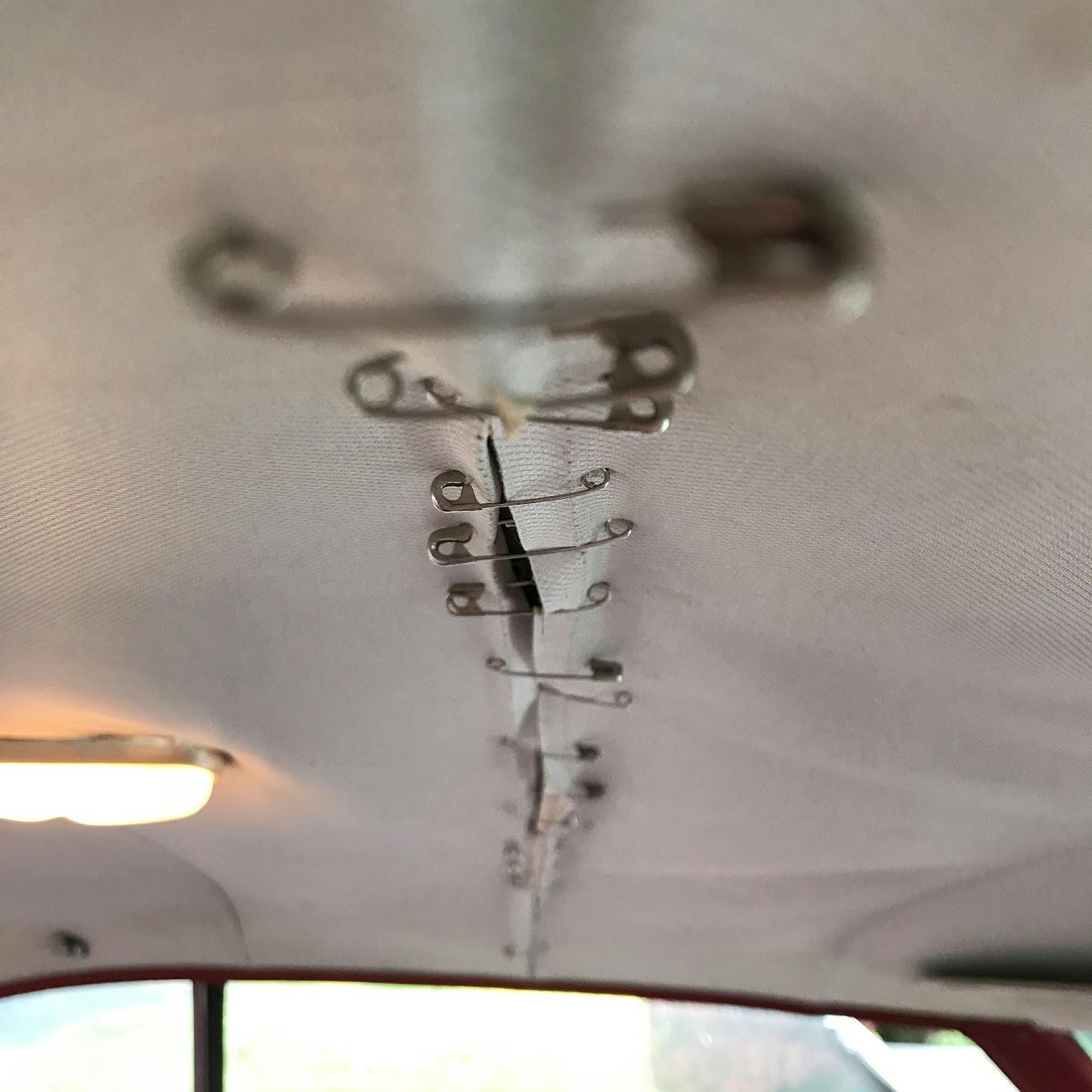5 garage projects that look simple . . . but aren’t
As each of us progresses from rank novice, timidly swinging a ratchet with both hands, to a DIY superhero who can diagnose a non-running engine based entirely on an internet comment, we encounter projects that build skills and confidence. Some of those projects go exactly as planned. Others are surprisingly infuriating.
The second kind of project hides complexity at every step. It demands special tools you didn’t know existed and techniques often learned only by doing.
Haven’t run into these jobs? You’re lucky. Here’s a brief list of projects where, as they say, There Be Dragons. Consider yourself warned.

1. Building a roll cage
It’s just some welded tubes, how hard can it be? And yet, that isn’t the best attitude for building a device that might save your life. (Or, if you’ve done a really poor job, take it.)
A properly designed roll cage is just that—designed. Correctly tying a cage to a car’s body and/or chassis is critical if you expect the end result to have any safety value. This means deep consideration of things like tubing material, type, and thickness, but also the angles of those tubes and the placement of their nodes and footer plates. Geometry and load transfer are critical here, and with a roll cage, they hang on everything from tubing placement and bend radius to whether that floor supporting your main hoop will punch through in a roll-over.
Add in the required welds—they need to be structurally sound, with the right penetration and bead—and you have a complex recipe that can seem simple at first. If you don’t want the whole thing to turn into steel toothpicks when you need it most, educate yourself first. Or leave it all to a professional.
2. Sizing custom wheels
Loosen lug nuts, remove wheel, bolt new wheel on, done. At least, if you’re lucky.
If you’re fitting truly custom wheels, you’re likely playing a game of measurement. A game that needs half a dozen reference points to really work. Wheel diameter, width, and backspacing are all variables in a system, and changing any of them can drastically impact a car’s steering response, handling, and ride quality. To say nothing of the clearance between wheel and tire and body and suspension under full compression and full droop, or how the sidewalls deflect while cornering and what they might rub.
At the bottom of all this is the danger of conventional wisdom: Wider tires aren’t always better, a wider track isn’t always better, a shorter sidewall isn’t always better. There’s a lot going on.
3. Reassembling a differential
It’s only two gears, how hard can it be? Pretty hard, as it turns out. Hypoid gears, like those in automotive axles, are quite picky about lash—the amount of play between a pair of meshing gears, like a differential’s ring and pinion. Too much or too little and the gears will wear prematurely, or make noise, or even bind.
Add in the need to properly preload the bearing holding the pinion gear—some diffs make this harder than others—and you’ve got a complicated process. One that can cost a lot of time and money if you get it wrong.

4. Making an engine actually leak-free
A multitude of factors go into this one. Machining. Surface prep. Cleanliness. The right chemical sealant. The right torque, the right fasteners. Using the right seals—sometimes that means a factory piece, sometimes not.
The older the engine, the harder it gets. Old-world solutions like cork gaskets, rope seals, and oil slingers conspire against you at every turn. That’s before you factor in gaskets and seals that might look identical to original parts but aren’t made as they once were. (Sometimes for better, sometimes for worse.)
Sometimes, modern materials can solve the problem. A dab of the right silicone or sealant might be all that’s needed. Other times, stopping a leak can mean using a hammer and a dolly to straighten an oil-pan rail, or taking material off a warped manifold face to true it. Or even just having the self-restraint to not overtighten bolts and crush a gasket too much.
If it was easy, all engines would be leak-free. And we know that’s not the case.
5. Headliners
They’re the finishing touch on any interior. Placement means that good work here is often underlooked. After all, a headliner lives above your head, and who looks up while driving?
A hung headliner takes a careful touch and careful planning to assemble. Bows must be tensioned at the right time, and any trimming of the headliner material must be judicious and careful. Cleanliness is paramount. Stretch the headliner’s various sections at the right time and in just the right direction, you won’t get wrinkles. Or maybe the whole job goes perfectly, but a small mistake at the end forces you to start over and order new fabric.
“Headliners,” as Hagerty editor-at-large Sam Smith says, “are like building a ship in a bottle: Straightforward, if you know the tricks. And it looks like magic if you don’t.”
If you’ve never tackled it before, the job can be mysterious and frustrating. Even the one-piece molded headliners of modern vehicles can be infuriating, as you never quite know just what, exactly, has to come out of the interior (sometimes it’s everything) simply to wrestle that large ceiling tray in or out of the car.
***
Of course, these jobs are just a sample. A virtually endless number of projects look easy but can, if approached casually, check up your confidence. Have a story or project to share? Tell us in the comments below!





I would never try a roll cage. Safety is priority to me.
It’s a toss up… try to install a very rare, NOS semi-pressboard, semi-paper mache headliner in a 1970 MGB GT without damaging a corner.
The fact I mentioned MGB… it’s Obvisous the other challenge is “leak-free”… you have better chances winning the lottery.
Painting a vehicle, properly. Beside the fact it is 90% preparation. To do it right requires a lot of disassembly, many hours of prep work, and then spraying. Hopeful you get even color and no drips or sags. But wait, do you have a clean booth, or chancing without? Good paint materials are not cheap. Then once actually painted you aren’t done yet. Time for color sanding and polishing that new paint. Plus putting it all back together. No wonder DIY paint job is mote than what it seems at first.
I did some top end work on a friend’s Buick 350 several years ago. He decided to go with synthetic oil afterwards. Started the car up and oil puked out the rear main. Jacked the engine up, dropped the oil pan and removed the rear main cap. No trace of a seal. Ran a piece of wire over the top of crank and no trace of a seal came out. To this day I don’t know how it didn’t leak out with the conventional oil. Installed a new seal and it’s been leak free since
Seal an engine? I don’t think that one is that bad, not after you learn that gobs of RTV don’t help (if a thin coat won’t somethings wrong with gasket or sealing surfaces!), and the surfaces need to be CLEAN! Unless you’re dealing with a really old (early 60s and earlier) engine with a rope seal at the crank and no neoprene replacement. I’ve NEVER got a rope seal to fully seal. I’ve always told people to consider it like an old Harley Davidson — it’s going to mark it’s spot, but you shouldn’t have a puddle.
The others? Yeah, much tougher than you’d think. I remember tackling (unsuccessfully!) the headliner in my second car, a 62 Rambler American with the cloth and bow type liner. What a disaster! I ended up pushing a piece of 1/2″ styrofoam board up there and making narrow vinyl covered panels and screwing to the exposed side areas. It turned out okay for a teen’s beater, but I’ve never tried another!
Which project is harder than it looks?
I had a ’66 CH Sportster for 25 years so it is obviously: Making an engine actually leak-free. But maybe this is not possible, or maybe it provides a life-long quest, or maybe it is becoming Sisyphus, or it could be learning that it is the journey not the goal. There is so much to be philosophical about when you have an iron head Sportster.